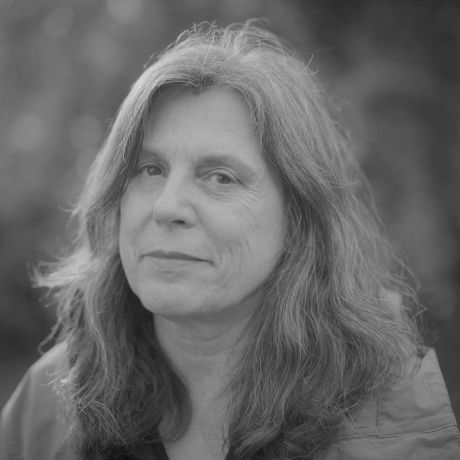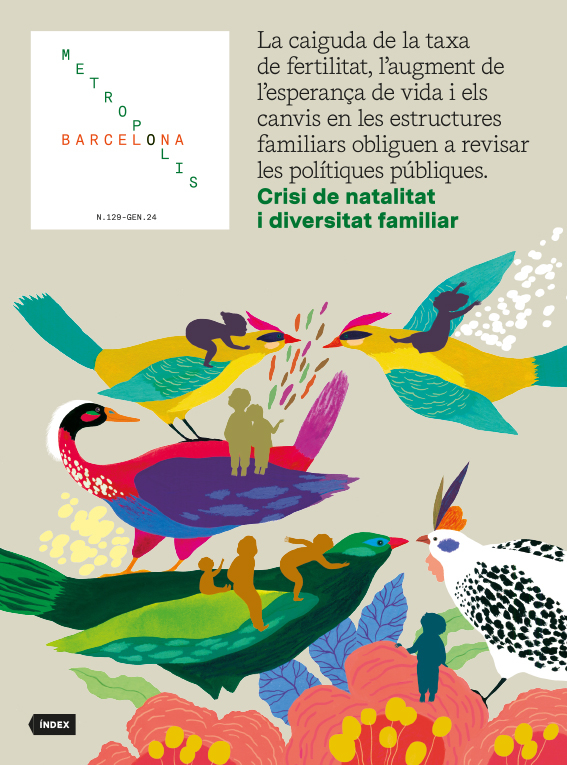Recognising and integrating family diversity
Birth rate crisis and family diversity
- Dossier
- Jan 24
- 9 mins
So-called “new families” are not truly new; they have always existed. Flexible family arrangements and cohabitation dynamics that contribute to the formation of diverse families have been part of the history of humanity, albeit frequently overlooked or stigmatised. Today, these families are visible, accepted and recognised, entitling their members to rights.
Many press articles often discuss the concept of “new families”. But what precisely constitutes a new family? Does a distinct social organisation exist that can be designated as such? Are these family structures genuinely new?
The United Nations (UN) continues to assert that the family constitutes the basic unit of society. Nevertheless, the concept has evolved in recent decades, adapting to global trends and demographic shifts. According to the World Health Organization (WHO), a family is defined as a group of individuals residing under the same roof, fulfilling specific roles (father, mother, siblings, etc.). Alternative definitions characterise it as a group of individuals connected by some form of kinship, cooperating economically and reproducing. Every culture and society have their own concept of family. Individuals considered family in one context may not hold the same status in another, and vice versa.
In 1947, the term “nuclear family” was first coined by the Cambridge Dictionary, defining it as a unit consisting of a mother, a father, children, excluding uncles and aunts, cousins or grandparents. This family arrangement, regarded – and valued – as a model promoting the independence and maturity, both economically and emotionally, of new generations, gradually replaced the extended family based on cohabitation and intra- and intergenerational relationships, including both solidarities and tensions.
Since the mid-20th century, the ideal family has been projected and represented by the image of the nuclear family, comprising a father, a mother and their offspring. This family structure has been widely exported, adopted by non-Western societies and cultures, and has become predominant in the Western world.
The nuclear family as a project
In the second half of the 20th century, the concept of the nuclear family became a project that demanded economic and emotional investments. The idea that children need personalised and intensive parental attention was increasingly widespread. Providing an ideal upbringing proved to be a challenge for larger families. For this reason, family sizes diminished in various contexts, with the ideal being a vision with two offspring of different genders: a “pigeon pair”, often desired by many couples embarking on a shared project.
This family model coincided with the dissemination of the contraceptive pill, among other social changes. Developed in 1930s through the synthesis of progesterone from the roots of a wild plant, this advancement enabled the cost-effective production of a chemical substance capable of influencing ovulation and fertilisation. The increasing integration of women into the labour market in the 1940s, filling roles left vacant by men who had gone to various wars in the first half of the 20th century, was accompanied by greater acceptance of contraception. The pill was approved in 1957 by the Food and Drug Administration (FDA) as a menstrual regulator and, by 1960, was being used as an oral contraceptive. This marked the first time that healthy individuals – women – would take medication for most of their fertile lives. [1].
The pill allowed reproduction to be effectively regulated with lesser harm to the physical and psychological well-being of women.
The pill allowed reproduction to be effectively regulated with lesser harm to the physical and psychological well-being of women. It played a pivotal role in facilitating their integration into the workforce, responding to the economic challenges of the early 20th century. It also gave rise to a notable shift in emotional, reproductive and familial dynamics but also initiated a protracted process of separating sexuality from reproduction. In parallel, the access to new freedoms and rights, alongside emerging vulnerabilities, paved the way for diverse family structures and arrangements that departed from the exclusive reliance on biogenetic or adoptive kinship, which had defined families in previous centuries.
The new family structures are not new
Most of what are commonly referred to as new family or cohabitation forms are not new. They have become more visible – and accepted – because they have gained or are gaining the right to be recognised as families.
Families resulting from relationships between divorced or widowed individuals with offspring are not new in human history. They are, however, new in terms of rights since, in the case of Spain, divorce was decriminalised in 1981, three years after the decriminalisation of contraception in 1978. These concurrent legislative changes recognised that women could decide when and how often to reproduce and also choose not to do so[2]. Individuals without offspring have always existed, as evidenced by various historical figures and different child-free cohabitation arrangements. Nonetheless, these diversities were frequently overlooked or stigmatised.
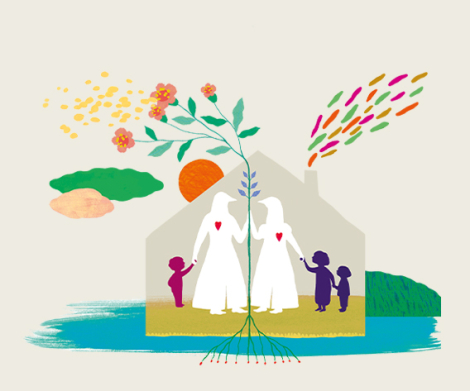 Illustration ©Mariona Cabassa
Illustration ©Mariona CabassaOn the other hand, these concurrent legislative changes acknowledged the possibility that “for life” families – given the growing life expectancy – might not remain so. Members of such families could “reconstitute” a family by accepting additional ties beyond biogenetic or blood ties. Although these ties have always existed, as indicated by the portrayal of the stepmother figure in children’s literature, they were historically regarded as secondary in familial terms and, consequently, concealed.
The recognition of the diversity of ties with the capacity to form families increased as of the 1990s in Spain, a country that has often been at the forefront of Europe and the world in the lowest birth rate and the highest age of first motherhood since then, transitioning from the baby boom to structural infertility[3]. In other words, since the 1990s, people have been having fewer children, later, and using various means.
Adoptive families have a longstanding history in Spain and were legally recognised as equivalent to families connected by biogenetic ties many years ago. However, it is only in recent decades that the act of forming or expanding a family through adoption has shed its status as a taboo and a personal, familial and societal secret. This shift has been influenced by the rise in international adoption[4].
Other forms of reproduction
Families formed or expanded through medically assisted reproduction are following a similar path of visibility and inclusion, a method through which currently one in ten children is born in Spain. In 1984, the first child conceived through in vitro [5], fertilisation was born in Barcelona, six years after the first in the world (in 1978, in London). In 1988, the first law on assisted reproduction was enacted in Spain, accessible to anyone of legal age. Currently, any individual up to around 40 years old and without offspring, regardless of their marital status or sexual orientation, can turn to public healthcare to have a child. Beyond the age of 40, if they can afford it, individuals have the option of seeking private healthcare.
Individuals opting for assisted reproduction can utilise their own genetic material or material provided anonymously by a third person. This is gradually gaining visibility as many families decide to tell their offspring, [6] and there are increasing demands for visibility from that offspring. Despite the lack of regulation for surrogacy in Spain, heterosexual couples facing infertility challenges and homosexual men have had offspring in locations where this procedure is legal.
Reproduction involving third parties is not new either. García Lorca hinted at it in Yerma
Reproduction involving third parties is not new either. García Lorca hinted at it in Yerma, and it has also been illustrated in the life paths of many individuals whose parents were not part of their daily lives and maintained anonymity. The formation of families with the involvement of third parties has always existed, but certain forms have only recently gained visibility.
Other forms of cohabitation
In terms of cohabitation arrangements, many of the “new” families have a long history. For instance, women who had children with men involved in other formalised family relationships and who did not live with them. Often, those who, for various reasons, did not have offspring would live with their father and mother or other relatives or friends. Presently, those who decide not to have children or to have them alone, as a couple, or with someone with whom they do not share a romantic relationship but only a parental project, also turn to various cohabitation forms, such as communal living, throuples, living apart together, or coparenting. Families in which their adult members do not cohabit daily for various reasons are not new family forms either. What is new is their visibility and the acceptance that non-cohabitation may arise from work, professional or personal decisions, also by women.
On the other hand, families currently designated as “multi-species”, incorporating non-human species like dogs, cats, birds or other animals into family life, are not new either; however, our awareness and naming of them are likely recent developments. These families are no longer exclusive to rural areas or communities with ample living spaces; they are also found in densely populated urban areas with compact residences, as well as in buildings or neighbourhoods that require agreements and regulations to safeguard the well-being of coexisting species.
Flexible family agreements and cohabitation dynamics shaping diverse families have been part of human history. However, these families are now not only present but also visible, accepted and recognised, entitling their members to rights. The separation of sexuality and reproduction has given individuals greater decision-making power regarding whether to have children, when to have them and how many. Tolerance plays a pivotal role in embracing this diversity and fostering an inclusive and respectful society that accommodates all family options. Nevertheless, recognising and addressing intolerable living arrangements is equally crucial to ensuring the well-being and safety of family members. A commitment to tolerance, understanding and responsible cohabitation is indispensable in building and preserving cohesive and harmonious families and communities.
Referents
[1] Marre, D. “El retraso de la maternidad”. A Devesa, M., Rodríguez Melcón, A. and Veiga, A. (ed.), Ser madre a los 40 (y más allá). Lo que has de saber (8-31). Grijalbo / Penguin Random House, 2018.
[2] Clarke, A. E. and Haraway, D. (ed.). Making kin not population. Prickly Paradigm Press, 2018.
[3] Alvarez, B. and Marre, D. “Motherhood in Spain: From the ‘Baby Boom’ to ‘Structural Infertility’”. Medical Anthropology, 41(6-7), 718-731. 2022.
[4] Marre, D. “Los silencios de la adopción en España”. Revista de Antropología Social, 19, 97-126. 2009.
[5] Marre, D., San Román, B. and Guerra, D. “On reproductive work in Spain. Transnational adoption, egg donation, surrogacy”. Medical Anthropology, 37(2), 158-173. 2018.
[6] Bertran Lafuente, J. Estimada desconeguda. Desig, òvuls, diners, dilemes. La Campana, 2023.
Publicacions
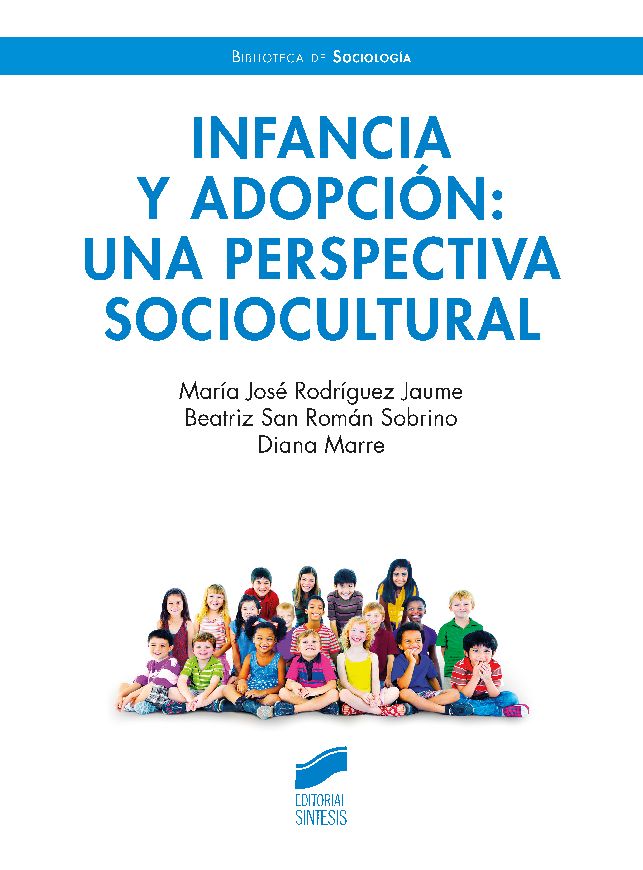 Infancia y adopción: una perspectiva sociocultural María José Rodríguez Jaume, Beatriz San Román Sobrino and Diana Marre
Infancia y adopción: una perspectiva sociocultural María José Rodríguez Jaume, Beatriz San Román Sobrino and Diana Marre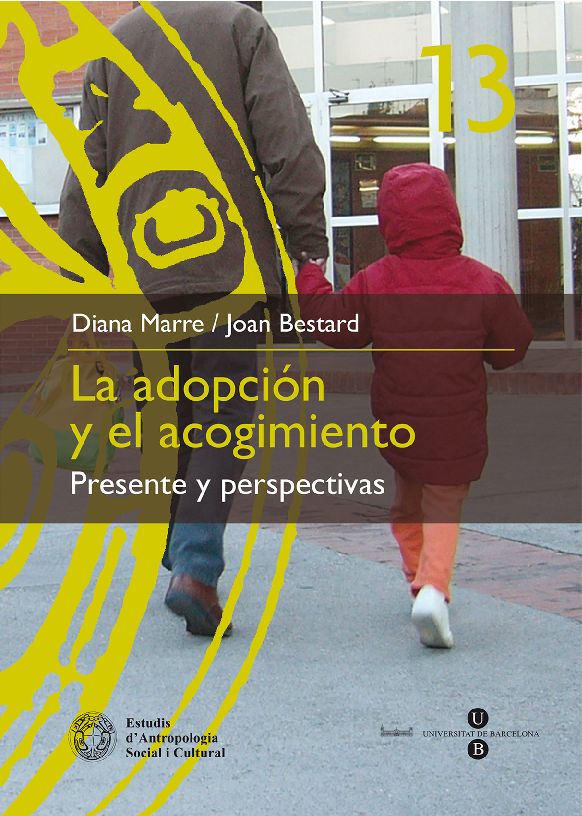 La adopción y el acogimiento. Presente y perspectivasDiana Marre and Joan Bestard (eds.)
La adopción y el acogimiento. Presente y perspectivasDiana Marre and Joan Bestard (eds.)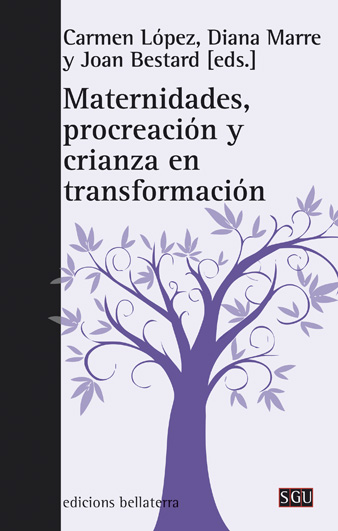 Maternidades, procreación y crianza en transformación Carmen López, Diana Marre and Joan Bestard (eds.)
Maternidades, procreación y crianza en transformación Carmen López, Diana Marre and Joan Bestard (eds.)
The newsletter
Subscribe to our newsletter to keep up to date with Barcelona Metròpolis' new developments



